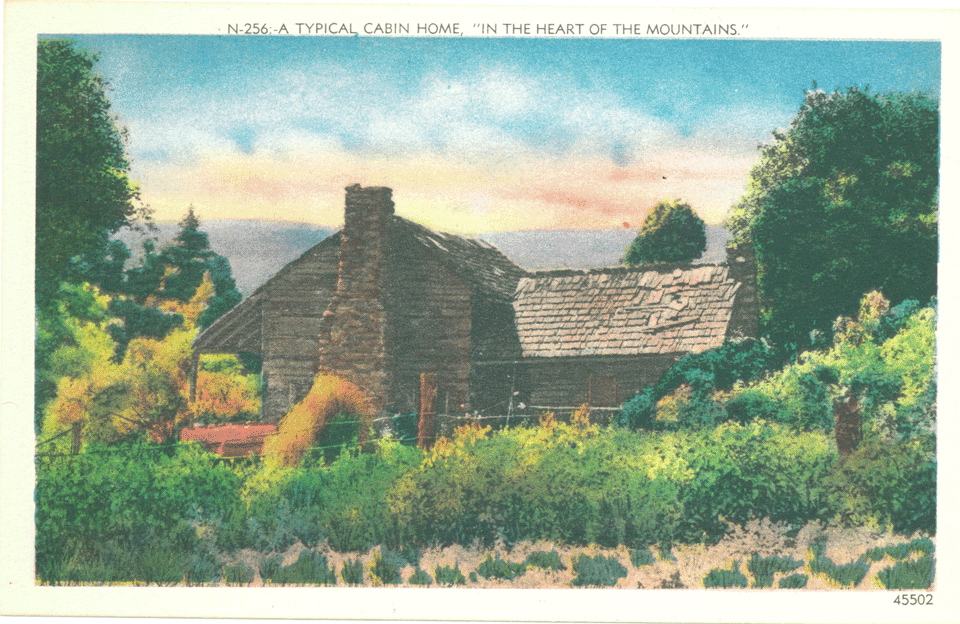Before written language, we had storytellers - people whose job it was to remember the stories and pass them down to the next generation. It is the oldest form of narrative communication, and was frequently used by groups such as those who settled in the Appalachian territory. These tales of supernatural and haints told of the deepest recesses of the mountain range...
In Serafina and the Black Cloak, the reader encounters something they can't quite put their finger. They are also introduced to the wampus cat, or catamount, a native animal to the region. What is the catamount?
Once, there was a Cherokee woman whose husband often went hunting. Before each trip, the men would seek out supernatural powers. One evening, the woman dressed in a cougar skin and followed her husband into the woods. She was spotted by the sorcerer and dragged before the men. The sorcerer cast a spell upon the woman, and her disguise became her skin. She became a mix of cat and woman. Nowadays, the catamount wanders alone through the Appalachian Mountains in the night. Whenever mystery occurs during the night, it is blamed on this wampus cat, who forever lurks near humans, never to rejoin them.
In Serafina and the Black Cloak, the reader encounters something they can't quite put their finger. They are also introduced to the wampus cat, or catamount, a native animal to the region. What is the catamount?
Once, there was a Cherokee woman whose husband often went hunting. Before each trip, the men would seek out supernatural powers. One evening, the woman dressed in a cougar skin and followed her husband into the woods. She was spotted by the sorcerer and dragged before the men. The sorcerer cast a spell upon the woman, and her disguise became her skin. She became a mix of cat and woman. Nowadays, the catamount wanders alone through the Appalachian Mountains in the night. Whenever mystery occurs during the night, it is blamed on this wampus cat, who forever lurks near humans, never to rejoin them.
- get their attention in the first 30 seconds to a minute with a compelling beginning
- end the story with emotion (happy, sad, content, excited, etc.)
- use expressive body language, words, facial expression and tone of voice to communicate the story
- know the basic facts of the story, and then tell it with flair and flavor
- don’t get sidetracked with another great story
- Serafina & the Black Cloak
- Time for a Tale (Spooky Tales)
- The Jack Tales
Watch
Make / Do
 Vocabulary
Vocabulary
 Vocabulary
Vocabulary- Painter – Mountain lion
- Ramp – Wild garlic
- Sorry – Something of little or no value
- Wish Book – Mail-order catalog
- Varmint – Wild animal
- Pert-near – almost
- Co-cola — any brown soft drink
- Ate Up – completely infected
- Haint — ghost
- His people — relatives
- Parts — neighborhood
- Poke — bag or a sack
- Polecat — skunk
- Red Light – stop light or traffic signal
- Skittish — nervous
- Spell — a while
- Actin’ Up — hurting
- Plumb — completely
- Worsh — wash
- Monday a week — next monday
- Liketa - almost or nearly
- Agin' - against
- You'ns - plural of you, similar to "y'all"
Think
- Research a story from this region. Where did it originate, and how has it evolved?
- Try your hand at coming up with, or altering an existing, supernatural tale.
Access more novel studies in the Fantasy & Fiction Novel Studies Bundle!
- Each unit has introductory text, which will give the student basic background information about the topic at hand.
- There are photographs and illustrations, and we have also included primary documents when available.
- After this text, there are featured videos, which augment the background information and help make the topic more accessible for more visual students.
- You will also find a short list of reading books, including one featured novel – the spine of the unit.
- There are vocabulary words, places, and people to identify.
- Reading comprehension, critical thinking questions, and writing assignments are included.
- We add fun with hands-on activities and extra videos to watch that will bring the era to life.
- Some units also have cooking projects.
These studies are directed toward upper grades students, but some have resources for younger students so that the whole family can work together. Our family has used unit studies as curriculum for many years, and we hope that your family will enjoy these, too!
Product Sample: Serafina and the Black Cloak & Appalachian Folklore






What a great set of resources! I have not heard of any of these stories before and am looking forward to sharing them with my kids. Thank you!
ReplyDeleteWe are currently studying American Indians and this will be interesting to share with my children.
ReplyDeleteI've not known of Serafina's tale before this. Good to learn a spot of history.
ReplyDeleteThis is really cool - love the advice of what a good story teller does - I find many authors don't know how to capture their audience quickly
ReplyDeleteWe just checked out this book from the library. Can't wait to read it.
ReplyDelete